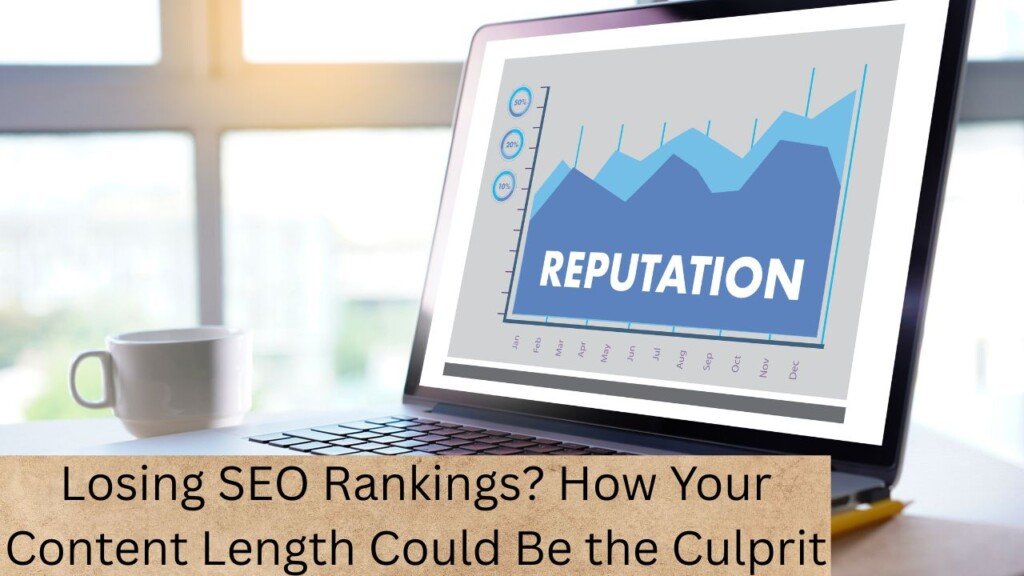Losing SEO Rankings? How Your Content Length Could Be the Culprit (And How to Fix It)
You’ve poured your heart into creating content. Yet, your SEO rankings keep slipping. You might be wondering—could the length of your content be killing your chances on Google? The truth is, both too short and too long content can hurt your SEO if it misses the mark on what readers actually want.
In this guide, I’ll help you understand why content length matters, when less is more, and when more is necessary. I’ll also show you how to audit and fix your existing posts to get your rankings back on track—without the guesswork.
Before diving in, try this Free Online Word Counter to quickly check your content length and ensure you’re optimizing for the right balance.

Why Content Length Can Make or Break Your SEO
Google isn’t just looking at how many words you write. It’s looking for content that satisfies user intent—meaning your content must answer the reader’s questions fully and clearly.
Too Short?
Short content often lacks depth and leaves readers hanging. Google sees that users bounce back quickly, signaling low satisfaction.
Too Long?
Long content can overwhelm readers, especially if it’s poorly organized or full of fluff. This leads to higher bounce rates and lower engagement.
When Short Content Wins SEO
Short-form content shines when readers want a quick, direct answer. Think of questions like:
- What is a VPN?
- How to reset a password?
In these cases:
- Users want simple, scannable info fast.
- Clear formatting like bullet points and bold text help readers find answers instantly.
- Mobile users especially appreciate brief, to-the-point content.
Short content can rank well if it solves the problem quickly and completely.
When Long Content is Necessary
Complex topics demand depth and detail. For example:
- How to start a blog from scratch
- The complete guide to investing in stocks
Benefits of long-form content include:
- Covering every angle of the topic to satisfy curiosity.
- Building your site’s topical authority.
- Attracting backlinks and social shares.
- Increasing dwell time, a positive ranking signal for Google.
But be careful—not all long content is good content. It must be well-organized and engaging.
Multimedia and Formatting: Making Long Content Feel Short
A wall of text can be scary. But adding videos, infographics, images, and using smart formatting makes a big difference. Here’s how:
| Element | Effect on Reader Experience | SEO Impact |
|---|---|---|
| Videos | Breaks up text, appeals to visual learners | Increases time on page |
| Infographics | Simplifies complex data visually | Encourages shares and backlinks |
| Images | Adds context and interest | Improves engagement |
| Bullet Points | Makes scanning easier | Lowers bounce rate |
| Bold Text | Highlights key points | Helps readers focus |
When you use multimedia and formatting wisely, a long article feels digestible. Editors and readers alike prefer content that’s easy on the eyes.
Before & After: Content Fix Example
Before:
A 300-word blog post titled “How to Bake a Cake” with dense paragraphs, no subheadings, and no visuals. It barely covers the steps and leaves beginners confused.
SEO Problem:
- Too short for a step-by-step tutorial.
- Poor readability causes high bounce rates.
- Google ranks it low because it doesn’t fully satisfy the query.
After:
Expanded to 1,200 words with:
- Clear subheadings for each step.
- Images showing the process.
- A video tutorial embedded.
- FAQs answering common beginner questions.
Result:
Better engagement, longer dwell time, and improved rankings as Google sees this as a complete, user-friendly resource.
Use This Framework to Audit Your Existing Content
Take control of your SEO with this simple audit process:
- Analyze User Intent
Check top-ranking pages for your keyword. Are they short answers or long guides? Match their style and length. - Measure Your Content Length
Use tools like Word Counter tools to check your word count instantly—no signup required. - Assess Readability & Formatting
Is your content easy to scan? Are there images, bullet points, and bolded keywords? - Identify Gaps
Are you missing examples, visuals, or answers to related questions? - Decide: Expand, Trim, or Reformat
- If too short: add detail, visuals, or related questions.
- If too long: remove fluff, reorganize, and use formatting to improve flow.
Common Mistakes That Kill SEO Rankings
- Mistake #1: Adding fluff to hit a word count.
- Mistake #2: Writing too briefly and leaving readers unsatisfied.
- Mistake #3: Ignoring formatting, making long content unreadable.
- Mistake #4: Not matching content length to user intent or query type.
Avoid these traps by always focusing on the user’s need first.
Final Thoughts: A Long-Term SEO Content Strategy
Stop thinking SEO is just about hitting a word count. Instead, think about satisfying your audience completely. When you answer the question fully, in a format that’s easy and enjoyable to read, your rankings will naturally improve.
Now, here’s your challenge: Don’t just read this article. Go to your website, pick one underperforming post, and use this audit framework to optimize its length and structure today.
SEO success isn’t a guess—it’s a strategy. Make content length work for you, not against you.